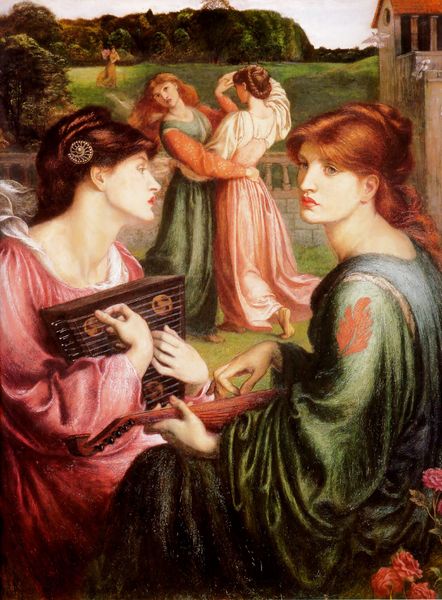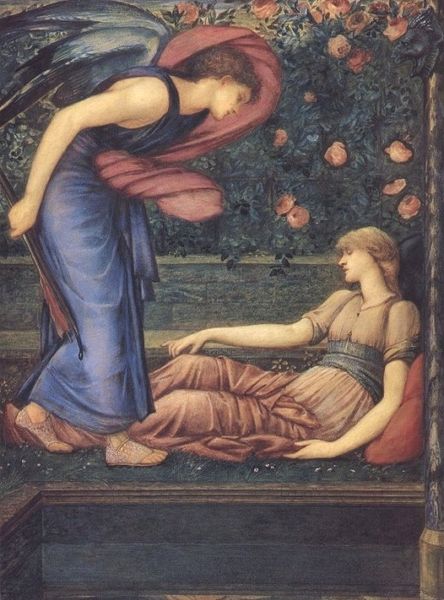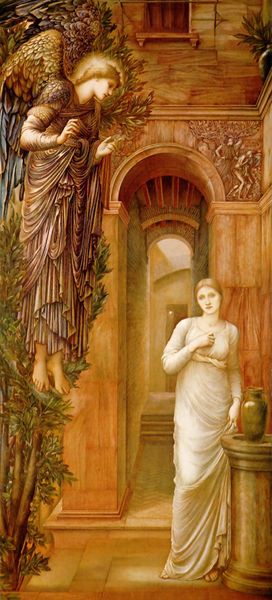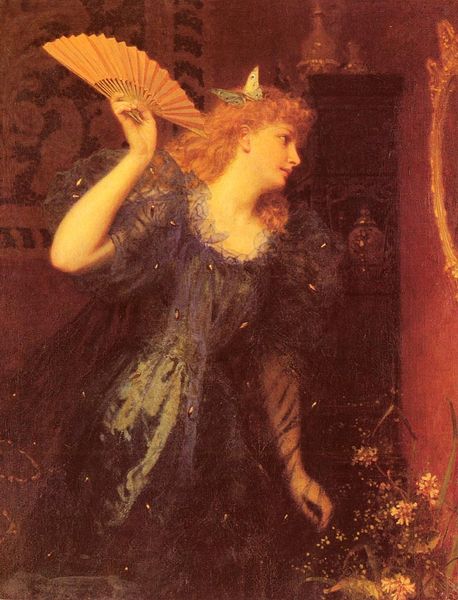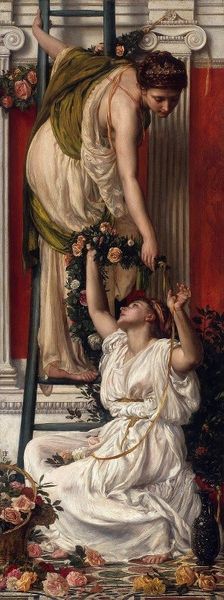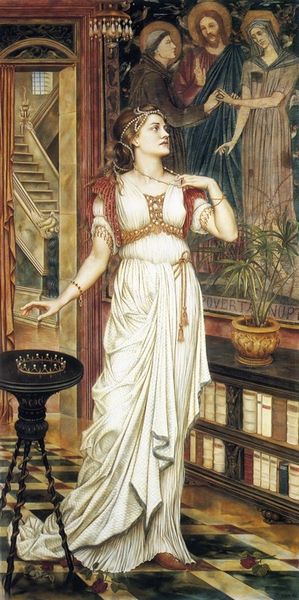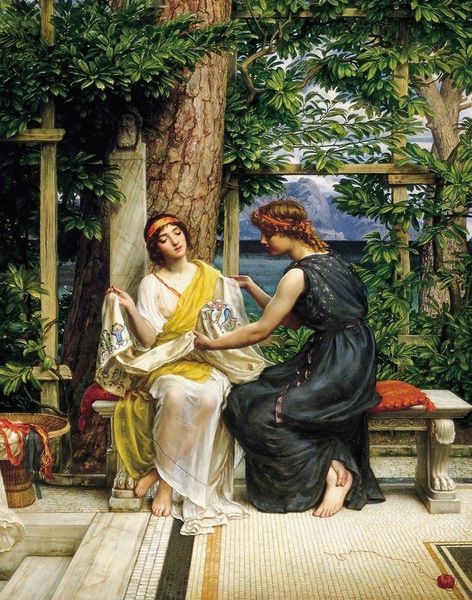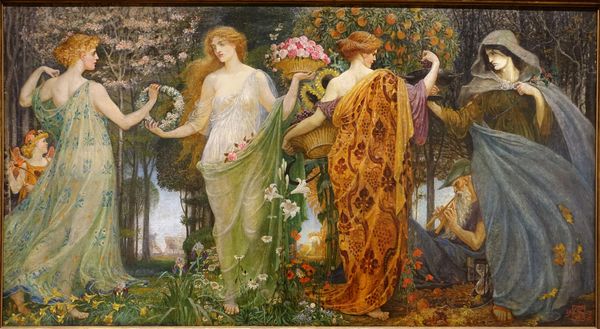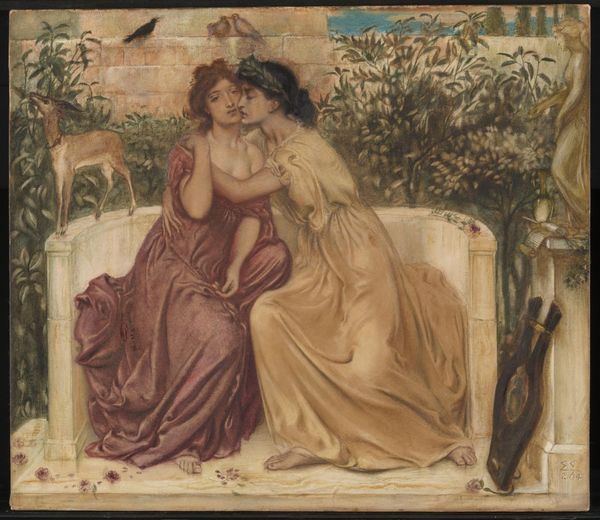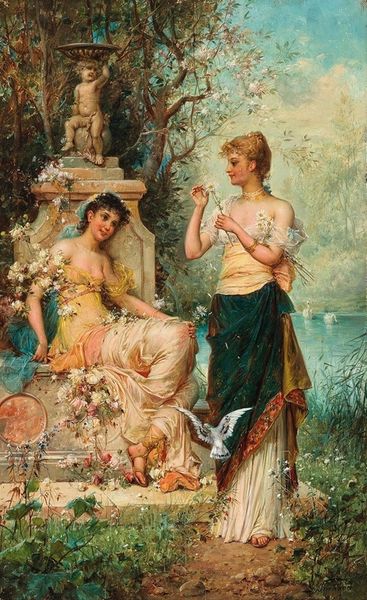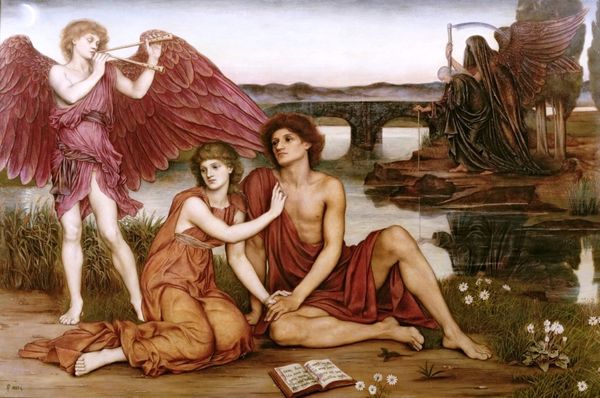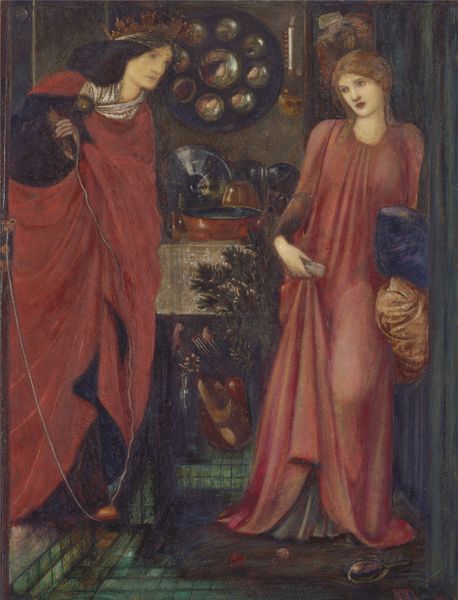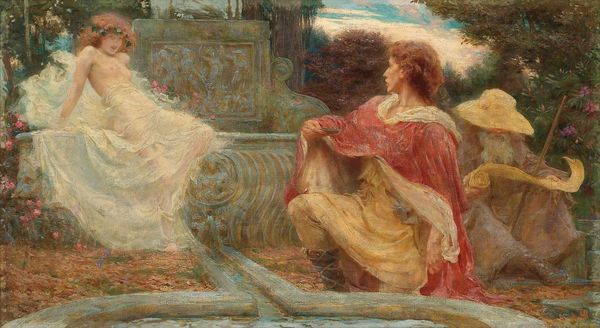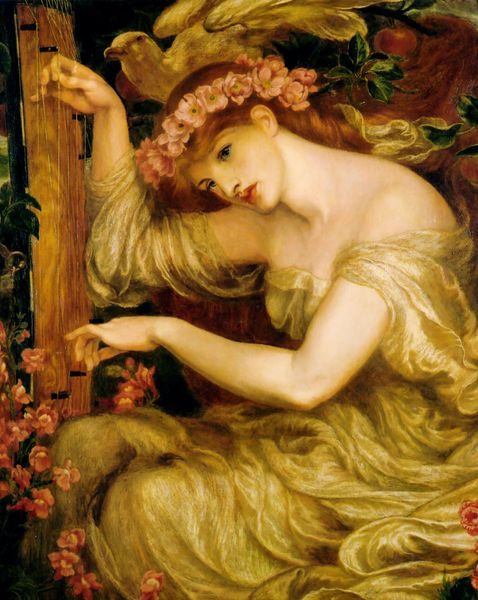
Copyright: Public Domain: Artvee
Curator: This is Evelyn De Morgan’s painting “Queen Eleanor & Fair Rosamund,” created sometime between 1880 and 1919. The artwork employs mixed media, including oil paint and gouache. Editor: The first thing that strikes me is the tense, almost theatrical atmosphere. The figures seem poised between action and paralysis, enveloped in a world that's both dreamlike and heavy with consequence. Curator: De Morgan's painting engages with the historical legend surrounding Queen Eleanor of Aquitaine and Fair Rosamund, the mistress of King Henry II. Rosamund's story was sensationalized for centuries. What's intriguing here is how De Morgan navigates this historical narrative through a distinct Pre-Raphaelite lens. We see elements of romanticism and fantasy intertwining. Editor: Absolutely. And I think she cleverly utilizes symbolism to deepen the narrative's complexities. Eleanor’s red thread acts as a visual device to highlight power dynamics and feminine agency in the context of marriage and societal expectations. She is leading the Queen to her target with clear determination on her face. Curator: Indeed, the painting’s cultural impact during the late Victorian period and early 20th century has many layers, where interpretations regarding morality, societal power dynamics, and art's role in visualizing complex histories are concerned. Editor: Looking at it from a contemporary perspective, one could read this painting as an examination of women navigating treacherous spaces of court intrigue, each one maneuvering within or against the structures designed to confine her. Eleanor, with her visible frustration and fury and the hand firmly clutching the poisonous wine goblet, demands control. Curator: And the cherubs at the bottom add a unique perspective. They are almost ignored in the center of this tension. Are they symbolizing a loss of innocence or corrupted ideals in the center of an immoral act? De Morgan forces the audience to acknowledge art’s role as both observer and social commentary. Editor: For me, the piece transcends a simple retelling of a legend. It presents the struggles of women attempting to subvert power during a period where social narratives and norms severely restricted autonomy. Curator: I agree. De Morgan asks us to consider who tells history, who shapes perceptions, and the enduring impact of narrative on social structures. Editor: Indeed. A rich tableau ripe with interpretations, highlighting enduring issues around the politics of representation and agency.
Comments
No comments
Be the first to comment and join the conversation on the ultimate creative platform.
